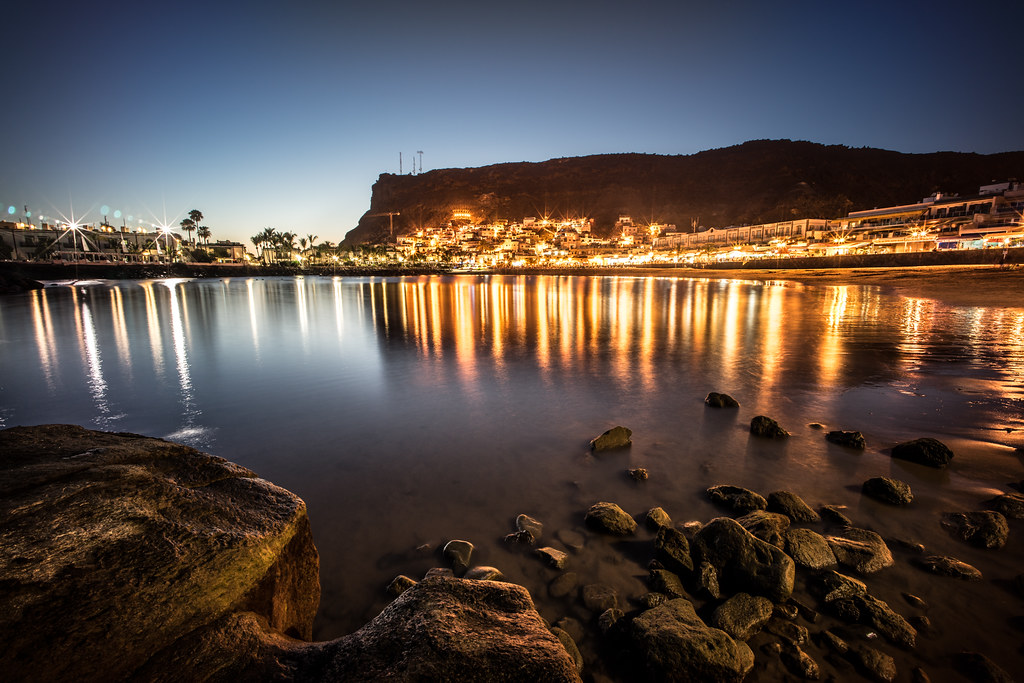 “La Gomera (Spain’s Canary Islands) – Gomera’s east coast region – in the back the island of Teneriffe and Pico del Teide” by Traveller-Reini is licensed under CC BY-SA 2.0
“La Gomera (Spain’s Canary Islands) – Gomera’s east coast region – in the back the island of Teneriffe and Pico del Teide” by Traveller-Reini is licensed under CC BY-SA 2.0
There are a lot of theories on the original Canary Island’s residents. However, none of them are backed by definite proofs. Even so, there is one thing that there is an enormous consensus that the Canary Islands had no native inhabitants, and that they have been inhabited since or before the year 1 BC. This leads to the question of where did the people come from?
The most popular theory is the one from La Laguna’s University in Tenerife that when the Romans dominated North Africa around 1st BC to 1st AD, they expelled the Canary’s indigenous people. This theory answers the lack of the original tribe s expertise on seafaring; typical inland people. And also the exiled population lack of chance to study Roman building methods or Latin script. The Roman inhabitants never bothered with these islands as they observed no profit in making such a long, hard journey across the seas. Till the time sea routs to America opened.
 “Canary Island Date Palm & Torch Lillies Torquay” by Torquay Palms is licensed under CC BY-SA 2.0
“Canary Island Date Palm & Torch Lillies Torquay” by Torquay Palms is licensed under CC BY-SA 2.0
The prominences of the harbor grew, with the start of the Trans Atlantic route from America to Europe. The Canary Isles became an unavoidable stop for t the fleet bound for the Americas. The city achieved such an incredible development that in the 19th century, under the rule of Ferdinand VII, the capital status of Tenerife was shifted to Santa Cruz from La Laguna.
La Laguna (The Lagoon) till then the most important center for business transactions, started to decline after the shift. The layout and the infrastructure around the old center of Santa Cruz de Tenerife to the northeast after the 19th century, started to change dramatically.
Playa del Ingles, a part of the municipality of San Bartolome de Tirajana, is located in Spain. Situated on the southern coast of the Gran Canaria Island, the city is popularly known as the ‘Beach of the English’.
The beaches are made of sand ridges that flow for the Sahara desert; they have long stretches of beaches, and also linked with few other beach cities like Maspalomas and San Agustín in the touristy region of the island. Playa Del Inglés is connected by the old highway between Las Palmas de Gran Canaria and Puerto de Mogán and through the GC1 expressway with a junction of the north.
They have a healthy population of around 18,000 in 2002, and rising. Most of the Hotels, restaurants, taverns and villas are aligned with its beach. There is a thriving nightlife, about 50 pubs and clubs dot the area. Before the tourism took roots; agriculture was the major business in the region. Even now, after tourism, it is the trading and agriculture that generate the maximum revenue.
 “Puerto de Mogan, Gran Canaria, Canary Islands” by Giuseppe Milo (www.pixael.com) is licensed under CC BY 2.0
“Puerto de Mogan, Gran Canaria, Canary Islands” by Giuseppe Milo (www.pixael.com) is licensed under CC BY 2.0
Playa Meloneras is also near here a little further south.
Maspalomas is located in the south of the island, 52 kms from Las Palmas. It is one of Europe’s popular touristy destinations. It is divided into 3 distinct areas: La Playa del Ingles’, San Agustin and Las Dunas de Maspalomas National Park. There are varieties of recreation facilities available such as fishing for sharks, diving centers, boat trips, sailing, tennis courts, and squash courts to golf courses…
By: Ken Sand



